“They will be happy with you, because YOU know what you are doing.” No pitfalls, no losses for you. Sadly, the old cemetery joke comes to mind. “They just can’t wait to get in.” Some weak hives just deserve a quick and final burial. (Bug riddled plants are the same.)
The Trickster Beekeeper! Or perhaps, the Rube Goldberg experimenter
| Be it a Flow hive, Warre or even a bottle hive these beekeepers will try anything on just for the try. Personally, I might have a problem with Warre’s but managed to use them as top mounted nucs on my Langstroth’s. I am a born dumpster hunter as well, making hives out of water coolers or whatever is cheap and available. Extra mason jars? One uses them and make comb within the jars. Now I am onto putting the BEES into large water bottles and hanging them from trees.
Mind you check the video above. Two bottles are mated for this to work. |
 |
Bottles can also be used to trap wasps and carpenter bees as well, so having bottles around is always a plus. 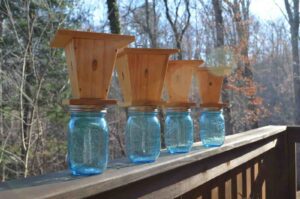
The Brother Adam The monk and the honeybee, or Lorenzo Langstroth The Hive and the Honey Bee, who influenced modern beekeeping more than any. Entomologists like Snodgrass. The Anatomy of the Honeybee and so, so many more. I will regale everyone with these adventurers of long past. Their writings may look a bit stogey, but to me they are always interesting and surprisingly quite pithy and true even to this day.
| Other recent books deal with social issues as well as does Honey Bee Democracy by Thomas Seeley. The consensus politics of the hive sure sounds nice.
And just how, did those bees make it to Australia on sailing ships or how and when did bees get transported to South America by the Portuguese or Spaniards? |
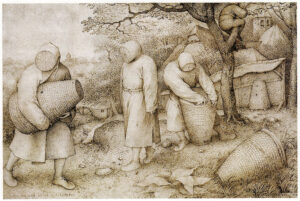 |
I believe the most avid beekeeper is always an investigation of oneself. You get to know yourself best by immersing your efforts in something you can learn from. Be it Entomology, Hive keeping, Queen rearing there are hundreds of books to jump into. ‘And after 40 years of learning and thinking I had it right I keep finding the floor falling out from under me with each new discovery.’ Greg.
There also is the “Pay Attention to Me” would be beekeeper. The one who gets a hive as an impulse thing or a present. The more expensive the better because frankly it is a great way to draw attention to oneself. Wear a beekeeper’s shirt and you are sure to get some questions at the store checkout line or party. If indeed they take the time to learn more about bees (rarely done) it is so that they can pontificate questions about beekeeping and the honey they have made. More often than not they appear at bee club meetings and sit down like bumps on a log and expect to be entertained as if attending the meeting is some sort of recreational activity. Even worse they dog someone more experienced and expect them to tell them that the Flow hive, not even put together yet (still in the box) would be good.
Most bee clubs also have at least one member who is the “Always Right Person.” Be it Warre, Longbar, Langstroth they know it all. They will also be the first and last to tell one that this is the only way to do it. Nope. That is so not me, I often test things just to see if I can tweak them to work in a different way. Failures are as accepted as successes as I get great joy in just finding out what works. — The kid who experimented with gibberellic acid and magnetic fields on his cactus seeds. Maybe I should put grounding wires on my hives and see how that works? Would they respond to music, easy enough to provide as I work around them in my garden. So, color me a hybrid between the “Mad Scientist” and the “Pay Attention to HIVE, beekeeper.
Funny how aging creates certain edits. Having come down with a disability I must now view myself as the “Lazy Beekeeper.” These days I am left thawing out memories of the days I would rip hives out of attics or climb up a ladder to take a swarm out of a chimney. Those days are gone. Today’s reality means switching from ten frames to eight frames or even plastic hives.
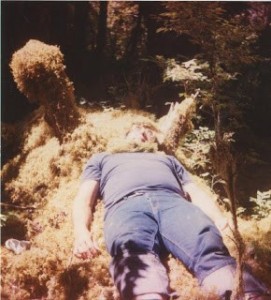 |
 |
Personally, I find the investment into my beehives health and wellbeing brings the same to my own. Like pruning a tree and opening it up its shape it is meditation of the best form. You focus and stay in the moment when you are working with thousands of bees, listening to their sounds and smelling the product of their labors. Meditation that is productive. There is the honey on top of all if one does this well. This is the observant and Meditative Beekeeper.
I would be remis in mentioning the Skulking Thieving Beekeeper who brazenly comes into your apiary and steals your hives.
The best I can say is that in beekeeping I am ever learning another part of myself, just like my garden. My garden can change at any time, at any age … just like this hybrid collaboration of beekeeping and nursery work called out to me and I am not quite finished with it yet.
(C) Herb Senft 2023

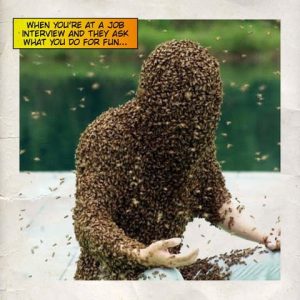
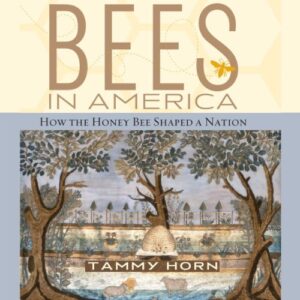
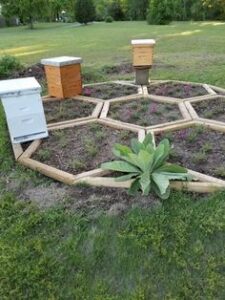
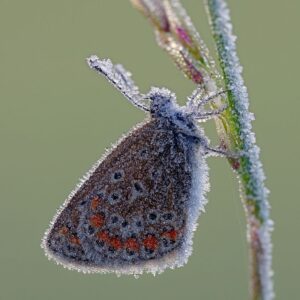
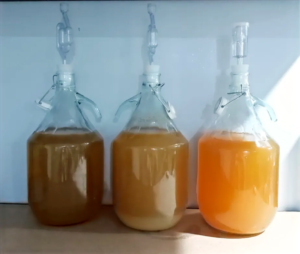
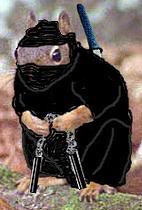
I am going to add a comment that I received in an email. I agree with it entirely. “Beekeepers being the most lethal thing the bees have ever seen in their 125 million years of existence.” Left on their own, the honeybee will eventually deal with Varoa, but the impacts of industrialized trucking of bees for pollination and the warehouse churning out of grafted queens has decimated feral wild bees from which DNA resistance may have made a difference. Worse yet are the yearly importations of mite ridden packages with questionable queen material. These mostly fail and the recreational beekeeper spreads the diseases and simply reorders the next year. Failed hives have become the norm. IMO we would be better off, leaving bees alone!
Your words cover it well Herb. People are a resourceful bunch, constantly inventing new ways to control nature while simultaneously ignoring that nature does have her limits. And far too often we find ourselves defeated by our own cleverness when problems arise that are greater than the original issue we were attempting to manage. It’s a question of balance; our failure to balance our ingenuity against the limits of nature’s resilience is undoubtedly at the root of the environmental issues we face today. Beekeepers are a perfect example.
Adaptations central to honeybee colonies surviving 10’s of millions of years reflect their resilience to overcome hugely interactive and complex challenges, but depriving them of diverse sources of pollen, moving them thousands of miles multiple times a year, subjecting them to an increasing array of chemicals, pests, and diseases, removing too much of their winter food and feeding them back corn syrup while pretending it’s “necessary” in order to feed a hungry world and make our economic gains is simply too much for them. We have tipped the resilience scales beyond their capacity to respond.
On one hand, as beekeepers, we proudly celebrate our inventiveness, on the other we see the ransacking our cleverness has brought upon these remarkable insects. If we were truly creative and insightful we would keep our management practices within the limits of our honeybees’ resilience. Our attempts to successfully manage and control nature must recognize that she has limits.
Thank you Greg. You always inspire. As you mention, the stress of trucking is an issue and while pollinating pollen deficient (nutrient wise) almonds the bees have little natural plant protein** alternatives as most of these almond orchards are kept sterile of plants. Planting hardy legumes would be nice, but little is blooming when the almonds are, perhaps dandelions, but we would not want to have weeds in the field. Other later crops are equally monoculture or at worst Monsanto/Bayer derived seed stock. Natural side plantings of fields with wildflowers and clovers is rarely done in this country although Austria is mandating that. **Generally there are twenty some basic amino acids in plant proteins found in pollen. Some plants are more generous in what they offer and bees would naturally opt for that source as they do Maple over Dandelion. Almonds have very little.
Yes, my understanding is honey bees require 10 amino acids for maximum development (Roulston and Cane, 2000). Since it’s proper to provide citations for things, I’ve done so. And we often hear in sideways conversations about honeybees collecting dandelion pollen, but that it “might not” be all that great for our bees. It turns out dandelion, lacks two of these (tryptophane & phenylalanine) and is short on arginine (Roulston and Cane, 2000). In that older study we hear about, young bees fed only dandelion pollen failed to rear brood (Herbert, 1992). Adult honey bees also died sooner on a diet of dandelion pollen than on other pollens (Knox, Shimanuki and Herbert, 1971).
Of course, something is better than nothing, and even though honey bees will enthusiastically visit dandelions if there is nothing else, I understand the plant itself is primarily asexual and therefore does not require pollination. It therefore appears to me as a sort of fill in species in terms of early summer nutrition, sort of an appetizer as opposed to a main course. Interesting as well is the seasonal variability of nutritional content for pollens. Radev (2018) found springtime pollens higher in protein content than autumn pollens. Enormous topics for sure.
Herbert, E. W. J. (1992). The Hive and the Honey Bee. Honey bee nutrition, In: Graham J. M. (Ed.), Dadant & Sons. Hamilton, IL, 197-233.
Knox, D.A., Shimanuki, H. and Herbert, E.W. (1971) ‘Diet and the Longevity of Adult Honey Bees’, Journal of Economic Entomology, 64(6), pp. 1415–1416. Available at: https://doi.org/10.1093/jee/64.6.1415.
Radev, Z. (2018) ‘The Impact of Different Protein Content of Pollen on Honey Bee (Apis mellifera L.) Development’, American Journal of Entomology, 2(3), p. 23. Available at: https://doi.org/10.11648/j.aje.20180203.11.
Roulston, T.H. and Cane, J.H. (2000) ‘Pollen nutritional content and digestibility for animals’, Plant Systematics and Evolution, 222(1), pp. 187–209. Available at: https://doi.org/10.1007/BF00984102.